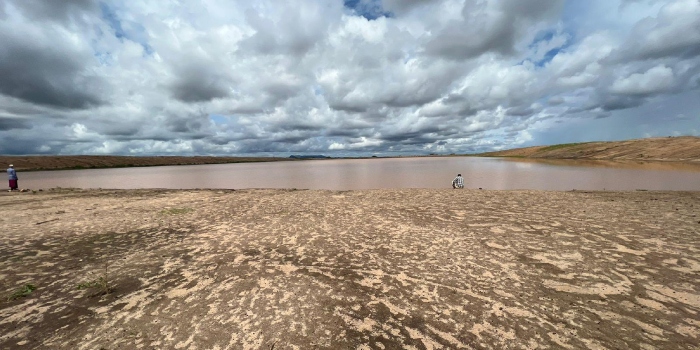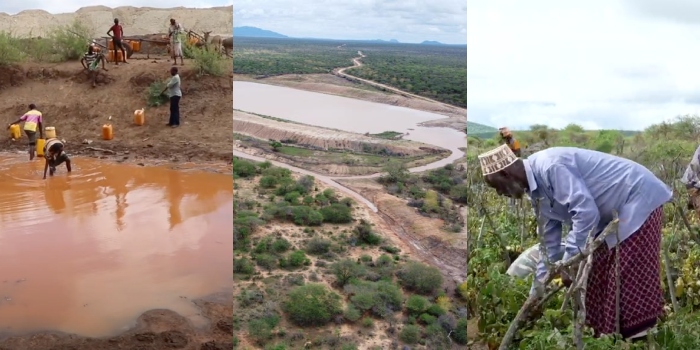In the vast, sun-scorched expanses of Northern Kenya, where drought and floods have long dictated the rhythm of life, a quiet revolution is unfolding.

The relentless winds that once carried only dust now mingle with the hum of excavators and the shouts of construction crews as massive dams rise from the arid earth.
These ambitious water projects, spearheaded by the Ewaso Ng’iro North River Basin Development Authority (ENNDA), are rewriting the story of a region once defined by scarcity.
For generations, pastoralist communities in Mandera, Wajir, and Marsabit counties have endured the cruel paradox of climate extremes alternating between devastating droughts and destructive floods.
But ENNDA’s visionary plan to harness these very floods is turning the tide. By strategically constructing mega dams across the region, the authority is capturing seasonal deluges, transforming them into lifelines for agriculture, livestock, and human consumption.
At the heart of this transformation is the Erestenno Dam, a monumental structure straddling the border between Mandera and Wajir North.
With a staggering capacity of 300 million liters, the dam is a testament to three years of meticulous engineering and community collaboration.
Its impact is already visible: where barren land once stretched, vibrant fields of tomatoes, onions, and watermelons now thrive.
"The construction wasn’t just about holding water. We studied the natural flow of the rivers to ensure we captured floodwater efficiently without harming the environment. These dams also protect downstream communities from destructive floods," explains Benard Kasavuli, the civil engineer who oversaw the project.
The ripple effects of Erestenno and other ENNDA dams are profound. For Mohammed Hassan, a resident of Erestenno, the dam has redefined daily life.
"When the reservoir is full, water reaches our homes through pipes, our animals drink their fill, and our farms flourish. For the first time, we’re not just surviving, we’re planning for tomorrow," he says.
Women like Halima Haji are at the forefront of this agricultural renaissance.
"We’re growing vegetables, selling produce, and earning incomes we never dreamed of," she shares.
Nearby, Adan Hassan proudly surveys his lush plot of kales, tomatoes, and spinach.
"My children eat what we grow, and we sell the surplus. No more crossing into Ethiopia for food or water."
The economic shift is tangible. One woman recounts earning KSh 67,000 from a small plot, with others reporting up to KSh 110,000 from expanded harvests.
Watermelon sales alone have brought in over KSh 15,000 for some families, a windfall in a region where poverty was once inescapable.
Beyond Eresteno, ENNDA’s footprint includes the Boji Garse Earth Dam in Mandera (580,000 cubic meters) and Marsabit’s Chaffa Chachane Dam (500,000 cubic meters).
Even smaller structures, like Saku’s Guyo Tendeke water pan (25,000 cubic meters), are lifelines, enabling year-round farming in previously inhospitable terrain.
"Water is life. These projects ensure communities have enough water to last between rainy seasons. It’s not just about survival; it’s about sustainable growth," says Engineer Ali Ibrahim Hassan, ENNDA’s Managing Director.
The dams have also erased grueling treks for water. Abdullatif Mohammed, a local leader, recalls when families relied on donkey carts and motorbikes to fetch water from Ethiopia.
"Now that suffering is over. We’ve trained farmers to maximize this resource. The next phase will expand irrigation further," he says.
As the sun sets over Erestenno’s shimmering reservoir, the scene encapsulates Northern Kenya’s remarkable reversal: a region once synonymous with hardship now brims with possibility.
ENNDA’s dams are more than concrete and water; they’re catalysts for dignity, resilience, and a future where no child must thirst again.

